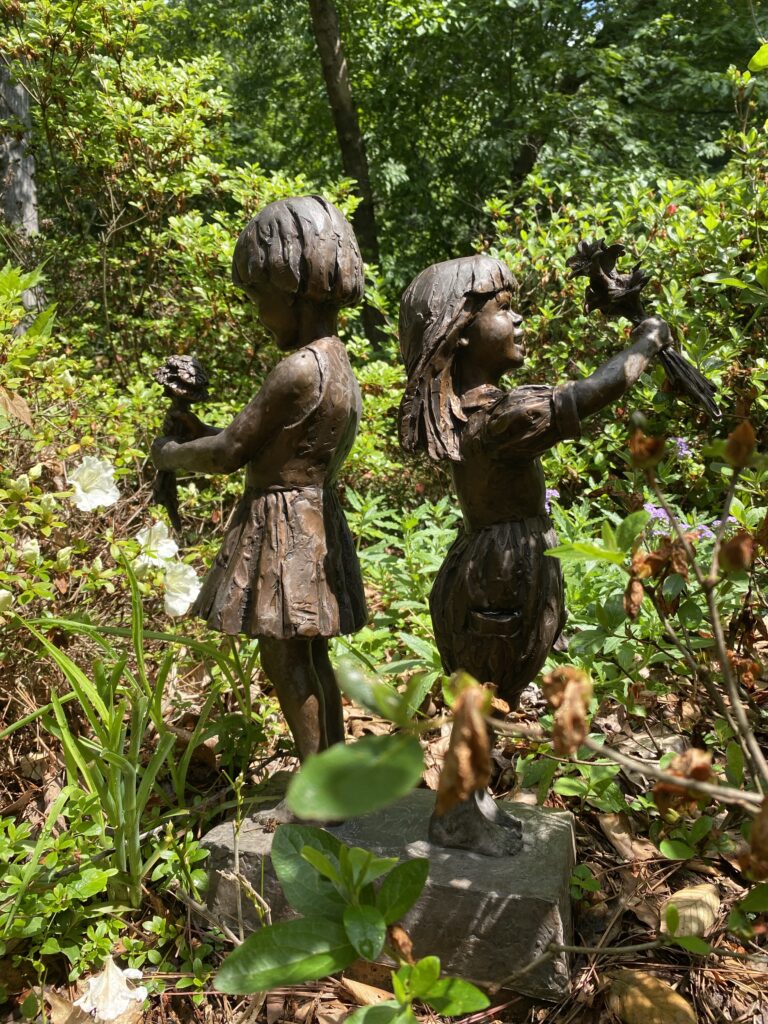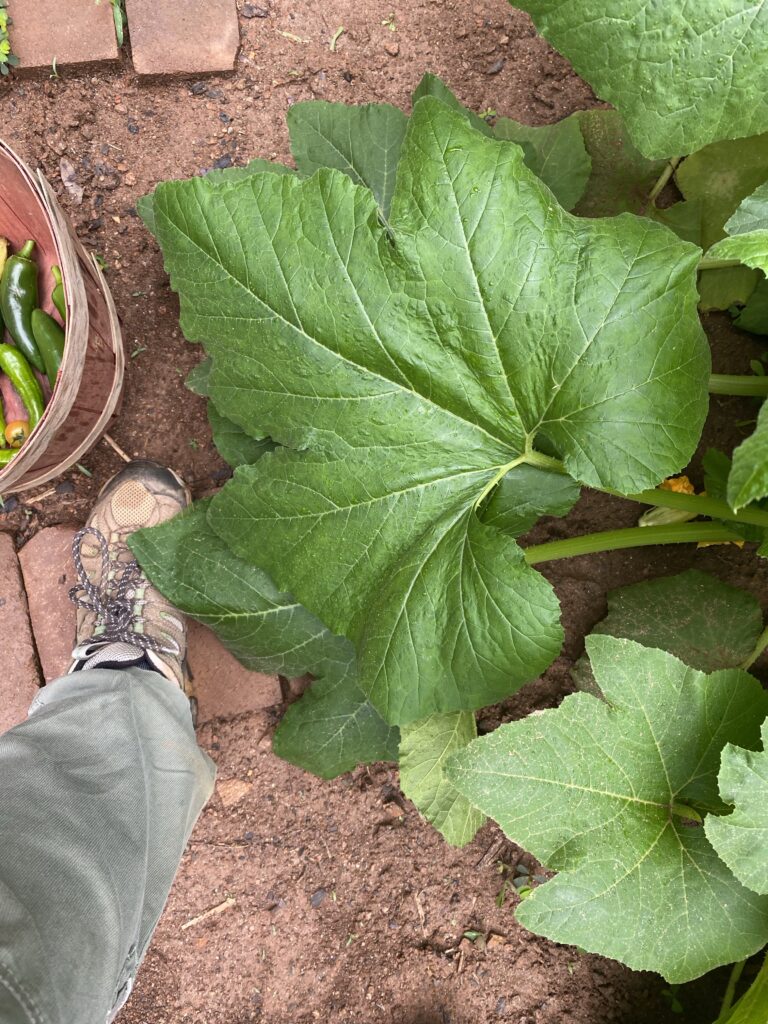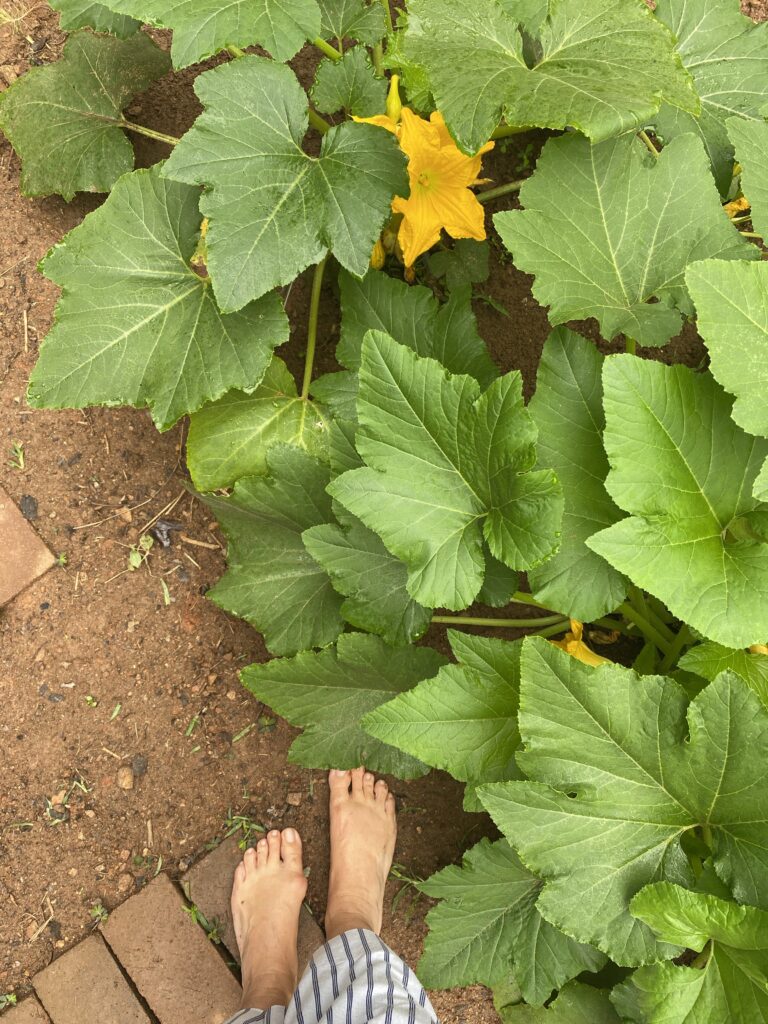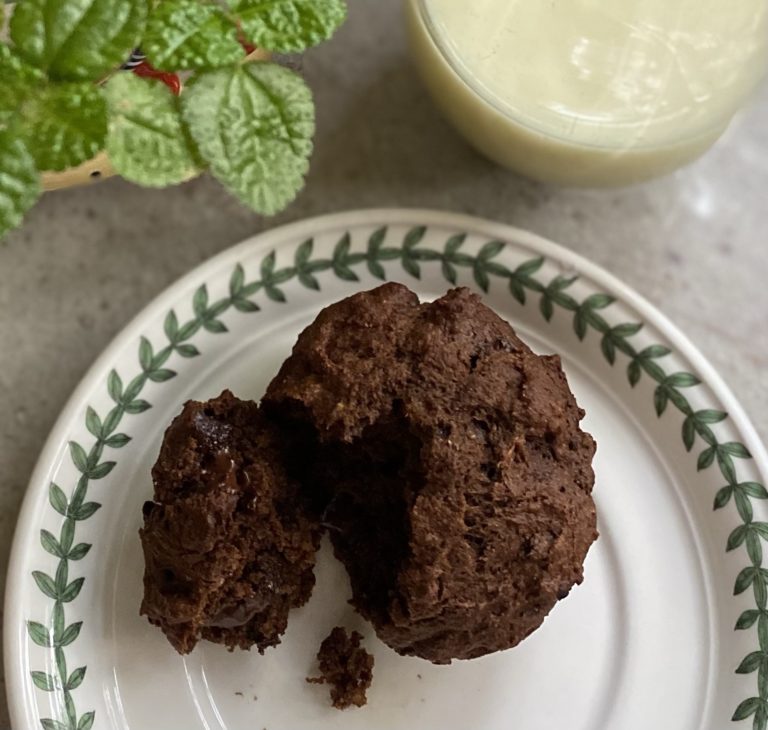Bees and other pollinators are so prevalent in my garden that they can be taken for granted. What happens when I am not there to see them? After a few hours of weeding, I am tired. It only makes sense that nature becomes tired as well. So, as I walk down the gravel hill wiping my hot face I wonder where the bees sleep. This simple curiosity gets the narration started.
Stack of Books
When I was teaching in lower school, one of my favorite parts of the day was reading aloud. A weekly visit to the downstairs library was a highlight. In the school where I taught, we had the best librarian (we called her a media specialist because she sure was that). She welcomed my visits and was always willing to pull a stack of books for me before my arrival. She knew my taste in books and knew I loved offering variety to my students. I still gravitate towards beautifully illustrated children’s books and especially love the ones that give nature its voice. After leaving the classroom, my most loved books traveled home with me and sit on a nearby shelf waiting on another chance at being heard.

Nature’s Voice
As odd as this may make me sound, I still hear the voices of nature even though I am no longer behind the pages of a book with twenty-three sweet faces looking at me. I wonder where the bees sleep, how the bluebird finds the perfectly soft straw just in time for her eggs to hatch, and do the cicadas find the daytime as noisy as they make the night. I would love to know their thoughts. And yes, whether it is true or not, I believe they have thoughts, and their world must be one so different than the one we live in.
Writers, Gardeners, and Teachers
Early morning is a perfect time to garden. The obvious reason is the lower temperature. However, as this becomes routine, we get to know the hidden breadths of this world. I bet that most children’s book illustrators and authors are also gardeners and possibly teachers. Maybe I’m fooling myself into thinking I am not the only one, but there must be others of you that give voice to nature. Tell me I am not alone. If I am, I’m okay with that too but I hope you’ll appreciate my perspective.

The Blooms Come
I have grown crookneck squash for at least the past three years, maybe longer. Like most things we take on, the first year is all about figuring out how to get started and our failed attempts at being perfect. By year two, I begin to enjoy the process more and even begin to change how I do things. Squash plants, for example, take up more room than I remember. I’m reminded the hard way every year. The leaves become huge, and I find myself in awe. Then the blooms come. They are bright yellow and often hide beneath the amazing leaves. It is easy to walk past these incredible plants and only notice those two things. After all, that is enough to impress. Year three of growing squash has me taking notice of details that have always been there, but I was inept to absorb. Such as…where the bees sleep.

Rest For The Bees
In my third year, I started my squash by sowing seeds directly in the garden. Because the seeds are so small, I did over-plant and consequently, I have a jam-packed, bright green squash crop. Along with that comes numerous yellow blooms. Some with fruit behind them and some without. I’ve been told to pinch off the ones without fruit to save the plant’s energy, but I never get around to that. I find the blooms as beautiful as the squash, so I let them thrive. In their abundance this year, they offered rest to many bees. Not to spoil the ending, but I know where the bees sleep.

All Is Quiet
I’m finally taking the gardening process a little less seriously and letting myself spontaneously explore. Yes, I still insist on winning the fight with the grass and weeds, but now I walk a little slower, sit and appreciate the work of wasps and bees, and always carry a basket and my camera. The way my garden is designed, my first steps take me past the enormous squash plants as soon as the gate squeaks and swings open. The space above the plants is quiet up until about 9 each morning.

Where The Bees Sleep
Why so quiet, I wonder? The squash blooms are open and bright. Deep down inside they are no longer white but lined in black. Curled inside is a bee… or two. They are as still as the night. No one is buzzing around. I pull the huge leaves aside and kneel in the dry dirt. There, deep inside the yellow squash bloom, is a bee. Several of the blooms have more than one bee nestled inside. I can only see the tips of their wings and their back end. They are not doing what is expected, buzzing, hopping, pollinating. This is where the bees sleep. They are hidden and find the perfect temperature for a summer night’s rest. The pages of this book turn easily.
Return To Slumber
Later, I read how these are typically the male bees that sleep inside a flower or on the end of a branch. The females typically return to the hive since their work is never complete. They are most likely solitary bees or a variety of bumblebees. Sometimes the bees sleep alone while others do not mind a little company. I shake one of the flowers and hear a mad buzzing and see a little unsettling. So maybe bees get mad when awakened just like us. I step back and let him readjust and see him nestle back into the flower. It is too early. He is not ready. I’ll work around where the bees sleep for now. The page turns and one flies into a neighboring bloom. He nudges in beside a new partner and returns to slumber.
Where The Bees Sleep
Before writing this post, I posted my video on Facebook and Instagram. Seems that others are fascinated too. One comment suggested I bring coffee next time. Not a bad idea for the ending of my book and the start of a new day. If the bees could talk, I bet they would simply ask that I garden a little later in the morning. Where the bees sleep may need to be a children’s book one day but for now, I’ll stay quiet and let nature rest as it readies itself for another day of necessary work in my squash garden.
Stay Curious,




